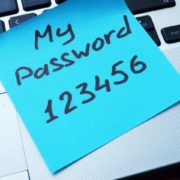How to Create Strong Passwords
One of the easiest ways to prevent data breaches is by choosing strong passwords for all of your logins. Attackers can easily guess weak passwords, so choosing complex combinations for each of your logins is critical in protecting private information. Take a look at some of DTP’s password dos and don’ts below to see how your current passwords stack up.
Password Best Practices
• Make your password as long as possible. Passwords of 14 characters or more are much more difficult to crack.
• Use varying characters, including uppercase and lowercase letters, numbers, punctuation, and symbols
• Consider using a passphrase with unlikely combinations of words, e.g. MyFavoriteSh1rtIsRed
• Use two-factor authentication
• Use different passwords for each account
• Change your passwords regularly, and completely. Updating your password from “dental2” to “dental3” is not a true password change (and neither are strong passwords)
Inconvenient as it may be, the most important password practice is to use different passwords for each of your accounts. If one of your passwords is successfully cracked by a hacker, they will try that same password on every other service.
Passwords Don’ts
• Don’t use personal information other people likely know or could find out,
like your birthday or the name of your partner
• Don’t use your username
• Don’t use repeated characters (111111) or keys close together (qwerty)
• Don’t write your password down or share it with anyone, especially via email.





